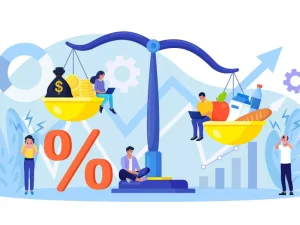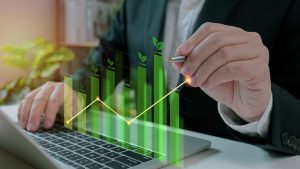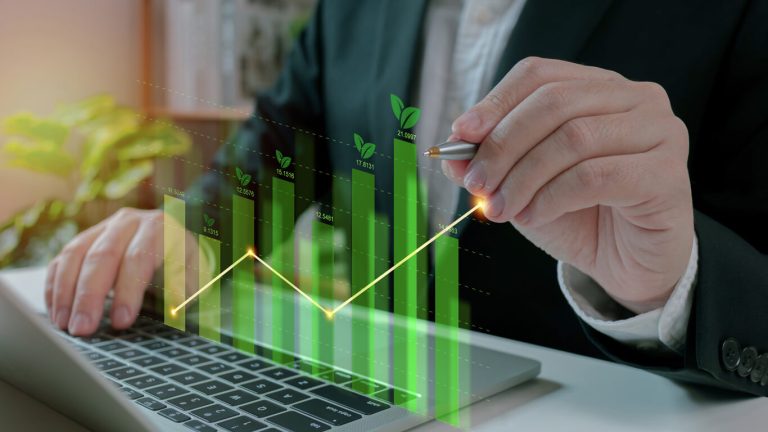Sustainable business growth is more than just increasing profits or expanding market share. It is about creating a long-lasting business model that can adapt, evolve, and thrive in a dynamic environment. The architecture of sustainable growth integrates strategic planning, operational efficiency, innovation, and social responsibility to ensure a business remains resilient over time. This article explores the core elements that make sustainable business growth possible, providing insights for business leaders, entrepreneurs, and investors.
Understanding Sustainable Business Growth
Sustainable business growth refers to a business’s ability to expand its operations and revenue consistently without compromising its values, resources, or long-term goals. Unlike short-term growth strategies, which often focus solely on profits or market share, sustainable growth emphasizes resilience, scalability, and adaptability.
Some key characteristics of sustainable growth include:
- Profitability with Purpose: Financial performance aligns with long-term strategic objectives rather than quick wins.
- Resource Efficiency: Optimal use of human, financial, and natural resources.
- Stakeholder Value Creation: Prioritizing employees, customers, and the broader community along with shareholders.
- Adaptability: The ability to respond to market fluctuations and technological advancements effectively.
By understanding these fundamentals, businesses can build a strong foundation that supports growth over decades rather than years.
The Pillars of Sustainable Business Growth
Sustainable growth is structured around several interdependent pillars that collectively ensure long-term success.
1. Strategic Vision and Purpose
A clear strategic vision acts as a roadmap for sustainable growth. Businesses must define what they want to achieve and how they plan to achieve it.
- Mission and Values Alignment: Every growth initiative should align with the company’s mission and core values.
- Long-term Goals: Setting measurable goals for 5, 10, or even 20 years ensures consistency and direction.
- Scenario Planning: Anticipating market changes and challenges prepares businesses to pivot effectively.
A strong strategic vision ensures that growth is intentional, not accidental, minimizing the risk of pursuing unsustainable opportunities.
2. Customer-Centric Approach
Customers are at the heart of any sustainable business. Understanding their evolving needs and preferences is crucial for long-term success.
- Market Research: Regularly analyze customer behavior, pain points, and emerging trends.
- Customer Experience Optimization: Invest in technologies and processes that enhance satisfaction and loyalty.
- Value Proposition Enhancement: Continuously refine products and services to deliver superior value.
Businesses that prioritize customer needs often enjoy higher retention rates, increased referrals, and stronger brand equity—all vital for sustainable growth.
3. Innovation and Adaptability
Innovation is not limited to new products; it encompasses processes, business models, and organizational structures. Companies that innovate sustainably are better equipped to handle change.
- Product and Service Innovation: Continuously improve offerings to stay competitive.
- Process Innovation: Streamline operations to increase efficiency and reduce costs.
- Business Model Flexibility: Explore new revenue streams or partnerships to diversify income.
Adaptable companies respond faster to market disruptions, giving them a competitive edge in an unpredictable environment.
4. Operational Efficiency and Lean Management
Operational efficiency ensures that a business uses its resources optimally, reducing waste and maximizing output. Lean management practices can play a pivotal role.
- Resource Optimization: Use technology and automation to improve productivity.
- Cost Management: Identify and eliminate inefficiencies in the supply chain and production processes.
- Sustainability Practices: Incorporate environmentally friendly practices to reduce waste and energy consumption.
By focusing on operational excellence, businesses can achieve scalable growth without overextending resources.
5. Talent Development and Organizational Culture
Employees are a business’s most valuable asset. A strong culture and ongoing talent development are critical for sustainable growth.
- Employee Engagement: Encourage participation in decision-making and innovation.
- Learning and Development Programs: Provide continuous training to enhance skills and adaptability.
- Culture of Accountability: Promote responsibility, transparency, and ethical conduct.
A motivated and skilled workforce drives productivity, innovation, and long-term organizational resilience.
6. Financial Health and Risk Management
Maintaining robust financial health ensures that growth initiatives are sustainable. Businesses must manage risk while leveraging opportunities.
- Diversified Revenue Streams: Reduces dependency on a single market or product.
- Cash Flow Management: Ensures liquidity for operations and investment.
- Risk Assessment: Identify operational, financial, and market risks and develop mitigation strategies.
A financially healthy business can weather economic downturns and invest in future growth confidently.
7. Sustainable Supply Chain Practices
Sustainability extends beyond internal operations. A responsible and resilient supply chain supports long-term growth.
- Supplier Evaluation: Work with partners who adhere to ethical and environmental standards.
- Local Sourcing: Reduces transportation costs and carbon footprint.
- Continuous Monitoring: Ensure suppliers meet quality and compliance standards consistently.
An efficient, ethical supply chain contributes to brand reputation, customer trust, and environmental stewardship.
8. Technological Integration and Digital Transformation
In the modern business landscape, technology is a key enabler of sustainable growth.
- Automation: Streamlines repetitive tasks, reducing errors and freeing up resources.
- Data-Driven Decision Making: Analytics and AI help in predicting trends and making informed choices.
- Digital Marketing: Expands reach and improves customer engagement efficiently.
Integrating technology strategically allows businesses to scale faster and operate smarter, providing a strong foundation for sustainable growth.
9. Social Responsibility and Ethical Practices
Sustainable businesses recognize their impact on society and the environment. Corporate social responsibility (CSR) is not just ethical; it’s strategic.
- Community Engagement: Support local initiatives to strengthen brand reputation.
- Environmental Stewardship: Reduce carbon footprint and adopt green practices.
- Ethical Governance: Ensure transparency, fairness, and compliance with regulations.
Companies that prioritize social responsibility attract loyal customers, retain employees, and build trust with stakeholders.
10. Continuous Monitoring and Adaptation
Sustainable growth is not a one-time achievement but a continuous process of evaluation and adaptation.
- Performance Metrics: Regularly track KPIs such as customer retention, employee engagement, and profitability.
- Feedback Loops: Collect insights from customers, employees, and stakeholders to refine strategies.
- Agile Mindset: Encourage flexibility in operations and decision-making to adapt to market changes.
Businesses that embrace continuous improvement are better positioned to anticipate challenges and capitalize on opportunities.
Implementing a Sustainable Growth Strategy
Building sustainable growth requires a structured approach. Here’s a step-by-step framework:
- Assessment: Evaluate current business strengths, weaknesses, opportunities, and threats.
- Vision Setting: Define clear objectives and long-term goals aligned with your mission.
- Strategy Formulation: Develop initiatives across marketing, operations, finance, and HR.
- Execution: Implement strategies with dedicated resources, timelines, and accountability.
- Monitoring and Evaluation: Continuously measure performance and adapt strategies accordingly.
- Iteration: Refine processes, products, and strategies based on insights and market changes.
This cyclical process ensures that growth remains purposeful, resilient, and adaptable over time.
Benefits of Sustainable Business Growth
Investing in sustainable growth brings numerous advantages:
- Long-Term Profitability: Reduces volatility and ensures steady revenue streams.
- Enhanced Reputation: Ethical and responsible practices strengthen brand trust.
- Employee Retention: A positive culture attracts and retains top talent.
- Market Resilience: Adaptability helps withstand economic and competitive pressures.
- Innovation Culture: Encourages creativity and continuous improvement.
By focusing on sustainability, businesses can achieve balanced growth that benefits stakeholders, the environment, and society at large.
Common Challenges in Achieving Sustainable Growth
While the benefits are clear, businesses often face challenges such as:
- Short-Term Pressure: Balancing immediate financial goals with long-term sustainability.
- Resource Constraints: Limited capital or talent to invest in growth initiatives.
- Market Volatility: Rapid technological changes and evolving consumer behavior.
- Resistance to Change: Internal culture or leadership may resist transformation.
Addressing these challenges requires strategic foresight, effective communication, and a culture of adaptability.
Conclusion
The architecture of sustainable business growth is built on a foundation of strategic vision, operational efficiency, innovation, and ethical practices. By focusing on these pillars, businesses can achieve resilient, scalable, and meaningful growth that stands the test of time. Sustainable growth is not just a business objective—it is a mindset that integrates purpose, profit, and responsibility, creating a thriving ecosystem for all stakeholders.
FAQ on Sustainable Business Growth
1. What is the key difference between short-term and sustainable business growth?
Short-term growth focuses on immediate financial gains, while sustainable growth emphasizes long-term value creation, resilience, and adaptability.
2. How can small businesses achieve sustainable growth?
Small businesses can focus on customer-centric strategies, lean operations, innovation, and building a strong organizational culture aligned with long-term goals.
3. Why is innovation critical for sustainable business growth?
Innovation allows businesses to stay competitive, adapt to market changes, and continually improve products, services, and processes.
4. What role does corporate social responsibility play in sustainable growth?
CSR enhances brand reputation, fosters customer loyalty, attracts talent, and demonstrates a commitment to ethical and environmental responsibility.
5. How can businesses measure the effectiveness of their sustainable growth strategy?
Businesses can track KPIs such as profitability, customer retention, employee engagement, resource efficiency, and environmental impact.
6. Can technology alone drive sustainable growth?
Technology is an enabler, not a complete solution. It supports efficiency, scalability, and data-driven decision-making, but must be integrated with strategy, culture, and values.
7. What are common mistakes businesses make when pursuing growth?
Common mistakes include prioritizing short-term profits, neglecting customer needs, ignoring operational efficiency, and failing to adapt to market changes.


















